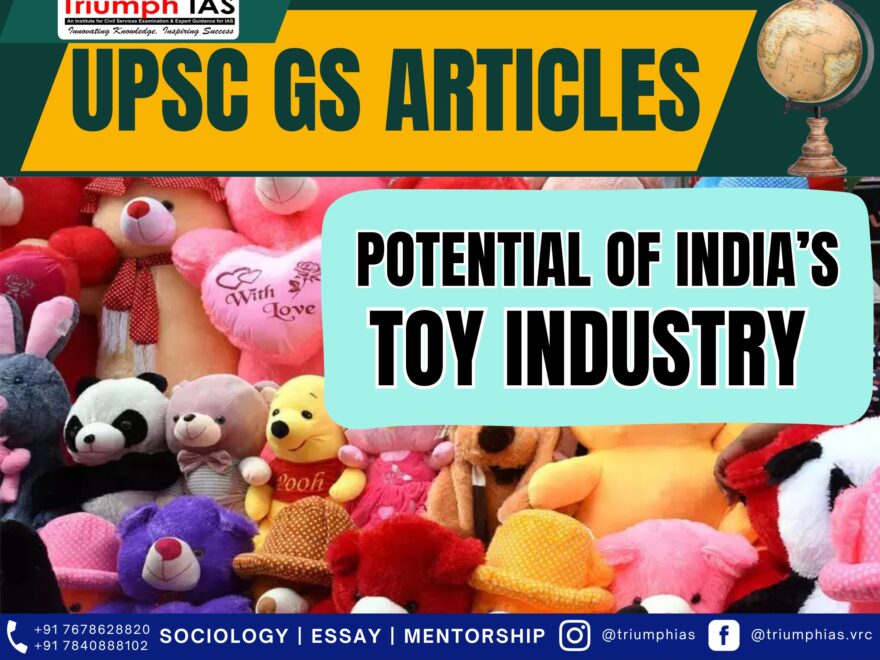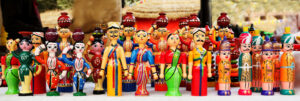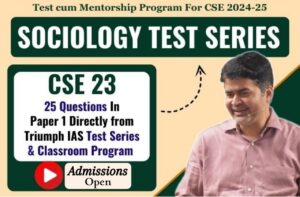Potential of India toy industry
(Relevant for General Studies Paper | Economics| Prelims/Mains)
(relevant for Indian economy and issues related to planning, mobilization of resources, growth, development and employment)
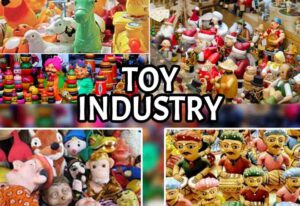
Potential of India toy industry
India has recently transitioned into a net exporter of toys, marking a significant shift from decades of import dominance during 2020-21 and 2021-22. In the past three years, toy imports have experienced a notable decline of 70%, accompanied by a substantial 61% increase in exports.
This accomplishment is widely attributed to the ‘Make in India’ initiative, launched in 2014, and related policies, according to official press releases. Additionally, in 2020, the Prime Minister reportedly emphasized the promotion of toy manufacturing during his talk show, ‘Mann ki Baat.’
While it is accurate that India’s reliance on Chinese toys has decreased, leading to an improvement in its exports in recent months, it’s essential to note that the scale of these exports remains modest. India’s toy exports are nearly 200 times smaller than those of China.
State of India’s Toy Industry
- India’s toy industry is significantly small, contributing a mere half-a-percentage point to the global toy trade in terms of exports. In the fiscal year 2015-16, the industry comprised approximately 15,000 enterprises or establishments, generating toys valued at Rs 1,688 crore and providing employment to 35,000 workers.
- Registered factories, those employing 10 or more workers regularly, constituted 1% of the total number of factories and enterprises. However, they accounted for 20% of the workforce and produced 77% of the total output value. Over the period of one and a half decades from 2000 to 2016, the industry experienced a significant decline in output in real terms, adjusted for inflation, leading to job losses.
- Importantly, imports contributed to as much as 80% of domestic sales until recently. Between 2000 and 2018-19, imports increased nearly threefold compared to exports. Previously, around 80% of toys were imported, resulting in substantial sums of rupees being directed abroad.
- According to a collaborative report by industry body FICCI and KPMG, India’s toy industry is anticipated to witness significant growth, doubling from USD 1 billion in 2019-20 to USD 2 billion by 2024-25.
Driving Forces behind the Growth of India’s Toy Industry
- Vast Consumer Base: India boasts a sizable population of children aged 0-14, constituting approximately 26.62% of the total population. This demographic contributes significantly to the heightened demand for toys and games within the country.
- Increasing Disposable Income: The growth of India’s GDP and the expanding middle-class population have elevated the purchasing capacity of consumers. Consequently, they can now afford to purchase a more extensive range of toys for their children.
- E-commerce Boom: The surge in online platforms and digital payment options has simplified consumer access to a diverse array of toys and games from various brands and regions. E-commerce has not only facilitated broader customer reach but has also contributed to reducing operational costs for toy manufacturers and retailers.
- Government Backing: The Indian government has initiated several campaigns and challenges, such as the vocal for local toys campaign, Toycathon, Aatmanirbhar Toys Innovation Challenge, etc., to bolster the domestic toy industry. These endeavours aim to enhance innovation, quality, safety, and competitiveness in Indian toys while minimizing dependence on imports.
- Changing Preferences: According to a 2018 report by the Toy Association, 67% of parents consider STEM-focused toys as the primary means to foster science and math development in young children. The shift in preference from traditional toys to modern and technologically advanced electronic toys is contributing to the robust growth of the market.
- Global Expansion: The toy sector is increasingly exploring global markets, with manufacturers actively seeking new markets and boosting exports to regions like the Middle East and Africa. India’s recent surge in toy exports, notably to the United States where it ranked as the 9th largest source, is a testament to this global reach.
- Protectionist Measures: India’s transition into a net exporter of toys is primarily attributed to the rise in protectionist policies and, to a lesser extent, the expansion of domestic capabilities. The resounding impact of the Vocal for Local campaign has played a pivotal role in driving this growth.
Significance of Toy Industry
- Child Advancement: Toys contribute to the cognitive, physical, social, and emotional progress of children.
- Amusement and Leisure: Toys offer entertainment, relaxation, and avenues for imaginative play.
- Educational Enrichment: Toys play a role in learning, nurturing curiosity, and imparting crucial skills.
- Economic Implications: The toy industry yields revenue, employment opportunities, and sustains associated enterprises.
- Innovation and Technological Integration: Toys propel innovation and integrate advancements in technology.
- Cultural Impact: Toys mirror cultural values, trends, and contribute to the promotion of diversity.
Government initiatives to promote toy industry
|
Challenges before India’s Toy Industry
- Foreign Reliance for Raw Materials: Indian manufacturers specialize in producing board games, soft and plastic toys, puzzles, etc. However, companies often have to import materials from South Korea and Japan to manufacture these toys.
- Technological Deficiency: Outdated technology and machinery appear to be a hindrance to the Indian toy industry. The majority of domestic toy manufacturers employ obsolete technology, impacting the quality and design of the toys.
- High Taxation: The imposition of high GST rates on toys poses another challenge for the Indian toy industry. Presently, electronic toys are subject to an 18% GST rate, while non-electronic toys attract a 12% GST.
- Infrastructure Deficiency: The sector’s growth is impeded by poor infrastructure and the lack of end-to-end manufacturing facilities. There is a shortage of adequate testing labs, toy parks, clusters, and logistics support for the toy industry in India.
- Competition from Inexpensive Alternatives: The Indian toy industry faces competition from cheap and low-quality imports, primarily from countries like China. China, contributing to 80% of toy imports in India, adversely affects domestic toy manufacturers.
- Unorganized and Fragmented: The Indian Toy Industry remains significantly fragmented, with 90% of the market being unorganized. This organizational structure makes it challenging to maximize the industry’s benefits.
What could be done to leverage the strength of toy Industry
- Enhance manufacturing capabilities for producing high-quality and competitive toys by leveraging technology and skilled labour.
- Promote small and medium enterprises (SMEs) by providing support, facilitating skill development, and offering financial assistance.
- Cultivate collaborations and partnerships to drive innovation and gain access to broader markets.
- Prioritize stringent safety and quality standards to instil confidence in consumers.
- Embrace digital transformation to broaden reach and tap into online markets for toy sales.
- Encourage the establishment of toy libraries and integrate toys into educational settings to promote holistic child development.
- Diversify the product portfolio to cater to changing preferences and needs of consumers. This includes developing educational, digital, traditional, and customized toys that appeal to different age groups and market segments.
- Adopt eco-friendly and circular practices in the toy value chain, such as utilizing waste and recycled materials, designing sustainable packaging, and creating reuse and re share models.
- Given the potential of toy industry in India, its benefits can be leveraged by addressing the challenges.
Reference The Hindu
Related Blogs…
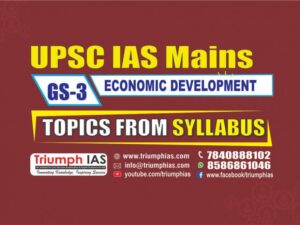 |
 |
Frequently Asked Questions:
-
Question: What has been the recent trend in India’s toy industry in terms of imports and exports?
Answer: India has transitioned into a net exporter of toys with a significant decline in imports and a notable increase in exports.
- Question: What are the driving forces behind the growth of India’s toy industry?Answer: The growth is driven by a vast consumer base, increasing disposable income, the e-commerce boom, government backing, changing preferences, and global expansion.
- Question: How has the Indian government supported the growth of the toy industry, and what initiatives have been taken?Answer: The government has promoted startups, increased import duties, mandated quality certification, and launched initiatives like the National Action Plan for Toys and the Toycathon.
- Question: What are some challenges faced by the Indian toy industry, and how can they be addressed?Answer: Challenges include foreign reliance for raw materials, technological deficiencies, high taxation, infrastructure deficiency, competition from cheap imports, and an unorganized market. These challenges can be addressed by enhancing manufacturing capabilities, promoting SMEs, fostering collaborations, prioritizing safety and quality standards, embracing digital transformation, and diversifying the product portfolio.
-
Question: What is the significance of the toy industry beyond economic implications?
Answer: The toy industry contributes to child advancement, provides amusement and leisure, supports educational enrichment, fuels innovation and technological integration, reflects cultural values, and sustains associated enterprises.
GS Related Practices Questions…
To master these intricacies and fare well in the Sociology Optional Syllabus, aspiring sociologists might benefit from guidance by the Best Sociology Optional Teacher and participation in the Best Sociology Optional Coaching. These avenues provide comprehensive assistance, ensuring a solid understanding of sociology’s diverse methodologies and techniques.
META TAGS:
India toy industry, growth, challenges, government initiatives, Make in India, toy exports, consumer base, economic implications, innovation, technological integration, quality certification, National Action Plan for Toys, SFURTI, competition, infrastructure deficiency

Why Vikash Ranjan’s Classes for Sociology?
Proper guidance and assistance are required to learn the skill of interlinking current happenings with the conventional topics. VIKASH RANJAN SIR at TRIUMPH IAS guides students according to the Recent Trends of UPSC, making him the Best Sociology Teacher for Sociology Optional UPSC.
At Triumph IAS, the Best Sociology Optional Coaching platform, we not only provide the best study material and applied classes for Sociology for IAS but also conduct regular assignments and class tests to assess candidates’ writing skills and understanding of the subject.
Choose The Best Sociology Optional Teacher for IAS Preparation?
At the beginning of the journey for Civil Services Examination preparation, many students face a pivotal decision – selecting their optional subject. Questions such as “which optional subject is the best?” and “which optional subject is the most scoring?” frequently come to mind. Choosing the right optional subject, like choosing the best sociology optional teacher, is a subjective yet vital step that requires a thoughtful decision based on facts. A misstep in this crucial decision can indeed prove disastrous.
Ever since the exam pattern was revamped in 2013, the UPSC has eliminated the need for a second optional subject. Now, candidates have to choose only one optional subject for the UPSC Mains, which has two papers of 250 marks each. One of the compelling choices for many has been the sociology optional. However, it’s strongly advised to decide on your optional subject for mains well ahead of time to get sufficient time to complete the syllabus. After all, most students score similarly in General Studies Papers; it’s the score in the optional subject & essay that contributes significantly to the final selection.
“A sound strategy does not rely solely on the popular
Opinion of toppers or famous YouTubers cum teachers.”
It requires understanding one’s ability, interest, and the relevance of the subject, not just for the exam but also for life in general. Hence, when selecting the best sociology teacher, one must consider the usefulness of sociology optional coaching in General Studies, Essay, and Personality Test.
The choice of the optional subject should be based on objective criteria, such as the nature, scope, and size of the syllabus, uniformity and stability in the question pattern, relevance of the syllabic content in daily life in society, and the availability of study material and guidance. For example, choosing the best sociology optional coaching can ensure access to top-quality study materials and experienced teachers. Always remember, the approach of the UPSC optional subject differs from your academic studies of subjects. Therefore, before settling for sociology optional, you need to analyze the syllabus, previous years’ pattern, subject requirements (be it ideal, visionary, numerical, conceptual theoretical), and your comfort level with the subject.
This decision marks a critical point in your UPSC – CSE journey, potentially determining your success in a career in IAS/Civil Services. Therefore, it’s crucial to choose wisely, whether it’s the optional subject or the best sociology optional teacher. Always base your decision on accurate facts, and never let your emotional biases guide your choices. After all, the search for the best sociology optional coaching is about finding the perfect fit for your unique academic needs and aspirations.
To master these intricacies and fare well in the Sociology Optional Syllabus, aspiring sociologists might benefit from guidance by the Best Sociology Optional Teacher and participation in the Best Sociology Optional Coaching. These avenues provide comprehensive assistance, ensuring a solid understanding of sociology’s diverse methodologies and techniques. Sociology, Social theory, Best Sociology Optional Teacher, Best Sociology Optional Coaching, Sociology Optional Syllabus.
Best Sociology Optional Teacher, Sociology Syllabus, Sociology Optional, Sociology Optional Coaching, Best Sociology Optional Coaching, Best Sociology Teacher, Sociology Course, Sociology Teacher, Sociology Foundation, Sociology Foundation Course, Sociology Optional UPSC, Sociology for IAS,
Follow us :
🔎 https://www.instagram.com/triumphias
🔎https://www.youtube.com/c/TriumphIAS
https://t.me/VikashRanjanSociology
Find More Blogs…
| Compare and contrast Karl Marx’s and Max weber’s | Karl Marx- Historical Materialism |
| Talcott Parsons : Social system | Scope of the subject and comparison with other social sciences |

